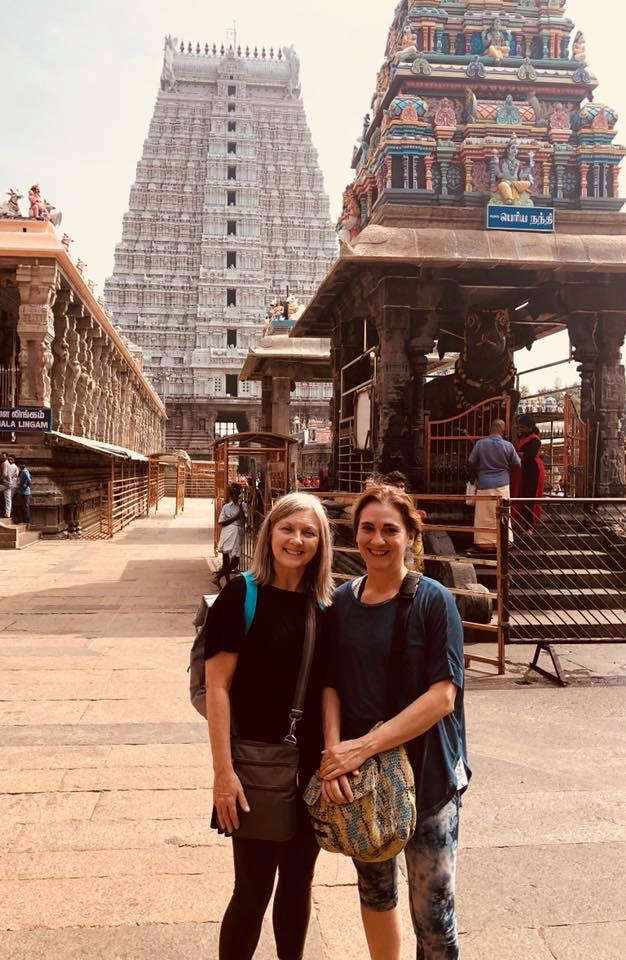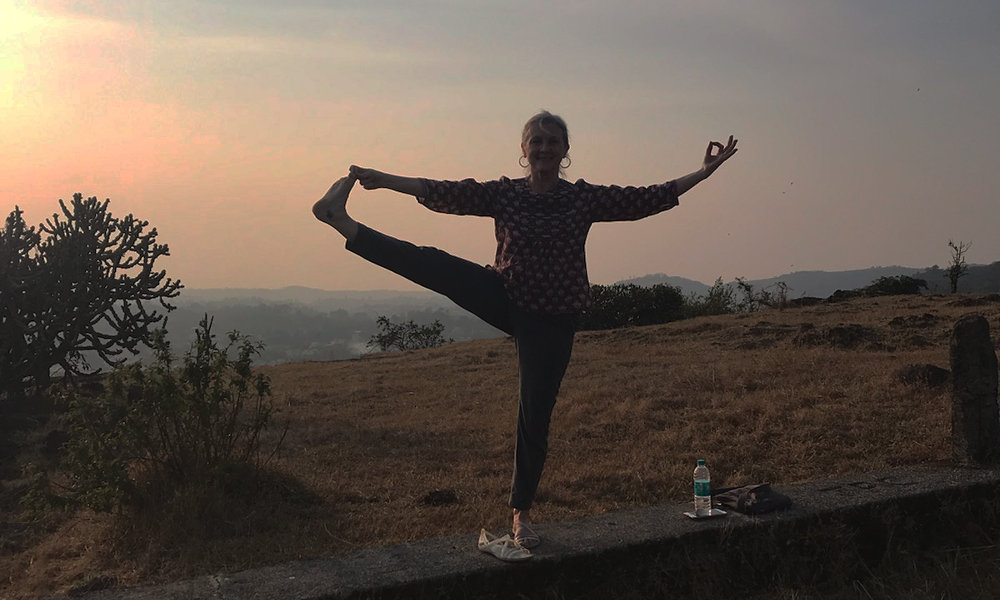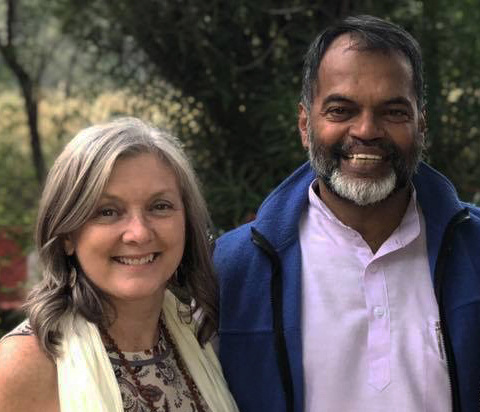Transformative Travel: A yoga therapy journey through India

As a yoga teacher and practicing yoga therapist, it has long been on my bucket list to travel to India. While India’s history is colorful, long and rich, I knew I wasn’t looking for the standard sightseeing experience. My purpose in traveling there was to experience yoga therapy through an Eastern lens.
Working for 20 years in allopathic medicine as a pharmacist exposed me to Western scientific models of healing, and I was more interested in understanding the Eastern perspective of health. When I discovered that Loyola Marymount University’s department of religion and spirituality was offering a yoga therapy educational journey to India, I was ready to submit my deposit within minutes!

Loyola Marymount in Los Angeles is one of a handful of universities in the U.S. that offers a masters program of study in yoga therapy. Two faculty members, Dr. Lori Rubenstein Fazzio and Shanna Hughes, served as our “tour” guides.
The group met in Chennai last December and traveled by bus to Puducherry, where we visited the International Center for Yoga Education and Research (ICYER) and the Center for Yoga Therapy Education and Research (CYTER) at Mahatma Gandhi Medical College. Both centers are known worldwide for their success at integrating yoga with scientifically based modern medicine in hospitals, as well as for their extensive yoga therapy training programs. The programs flourish under the watchful eye of Dr. Ananda Balayogi Bhavanani and his team of dedicated medical and yoga professionals.
Dr. Bhavanani is the son of Dr. Swami Gitananda Giri, trained in allopathic medicine and the ancient traditional spiritual sciences of India. He was the leader of Sri Kambaliswamy Madam from 1973 until he achieved samadhi in 1993.
Dr. Bhavanani followed in his father’s footsteps by becoming a medical doctor, and continues to be one of the most influential yoga teachers in India today. He has been carrying on the Gitananda legacy with the guidance of his mother and guru, Meenakshi Devi Bhavanani, popularly known worldwide as Ammaji. Interestingly, Ammaji was born in Minnesota, grew up in South Dakota and, while traveling as a young woman, landed in Puducherry at the ashram and later married Swami Gitananda. She has spent her entire life immersed in Indian culture and conveys a deep love and respect for the Gitananda tradition.

Our group from Loyola Marymount were invited guests at the third annual International Yoga Therapy Conference at Mahatma Gandhi Medical College in Puducherry and I was approved to share a presentation with the attendees entitled “The Art and Science of Yoga Therapy.” It was a once-in-a-lifetime experience to participate in such a prestigious gathering of minds. My presentation focused on the importance of creating a balance between the science (experiment) and the art (experience) of yoga therapy. While Western science is focused outward in search of answers, the yogi searches the depths of Self. It is this two-way integration of science and art through yoga that can lead to answers for those in search of whole healing and health. The yoga therapist offers opportunities for: unlearning, learning, releasing unbalanced patterns of movement/thought and listening to understand (vs. listening to fix). Most of us have decades of habitual patterns of response in the physical body (movement) and the subtle body (thoughts).
As yoga therapy gains credibility in the United States, it is important that we do not abandon its most important aspects in the name of acceptance by Western scientific standards. Dr. Bhavanani is a strong believer in the concept of salutogenesis, an approach to healing focusing on factors that support human health and well-being, rather than on factors that cause disease. Dr. Bhavanani and his team are working hard to generate scientific data proving the effectiveness of using the tools of yoga and meditation in the healing process.

“All tension begins in the mind.” —Dr. Bhalekar
For the next leg of the trip, we boarded a domestic flight for Lonavla, the home of Kaivalyadhama Yoga Institute and Research Center (KDHAM). We spent the next four days immersed in the study of Indian philosophy, yoga and mental health, Ayurveda, yoga anatomy/physiology, meditation and classic pranayama.
We practiced pranayama with one of the oldest pranayama teachers in the world, O.P. Tiwari, who was a student of Swami Kuvalyananda (the founder of KDHAM Ashram, 1924). O.P. Tiwari is one of the few masters teaching pranayama with classical technique that harmonizes with traditional wisdom.
We also enjoyed hours of lecture from Dr. Ganesh Rao of the University of Bombay exploring Indian philosophy. He reminded us that philosophy is nothing more than a love of wisdom and that it must be lived rather than studied … you must experience it to understand it.

For those who believe in multitasking, Dr. Rao offered the following words, “Multitasking is impossible, the mind cannot have two experiences at the same time.” And in regard to asana, “Any posture that is stable and comfortable is yoga, and asana is less than 5 percent of the practice.”
“In regard to karma, your intention is more important than your action,” he added.
The KDHAM campus was the first research center in India dedicated to creating a bridge between yoga and modern medicine. The 170 acres are home to a college and primary school, Ayurvedic and natural health center, asana halls and philosophical and scientific research departments. The picturesque campus generates solar and wind energy, has a barn with cows producing fresh milk, and its own extensive organic gardens. Gandhi himself traveled to Lonavla to study yoga at KDHAM.
The entire trip was made even more enjoyable thanks to my travel companion, Kerry Martens, a yoga teacher and KonMari consultant from Ames. We enjoyed several walking tours, shopping expeditions and experimenting with local food. The entire group totaled 20 travelers from around the world. LMU plans to offer the trip again next year if you are feeling inspired to travel and learn in India!
Sandy Eimers (RPh, C-IAYT, ERYT500) is a pharmacist, trauma-informed yoga therapist and owner of Balance Yoga Lounge & Balanced Breath School of Yoga in Ankeny, Iowa.


